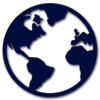
Only Regulatory Products (API/FDF), Drugs in Developments and News are Updated on this Virtual Booth
Update your Virtual Booth on PharmaCompass, ask us ![]()
About
Not Confirmed
Not Confirmed
24-26 February, 2026
Not Confirmed
Not Confirmed
17-21 January, 2026
Not Confirmed
Not Confirmed
21-22 January, 2026
List your booth number for exhibitions, ask us
CONTACT DETAILS




Upload your Marketing & Sales content on your company Virtual Booth, click HERE.
Events
Webinars & Exhibitions
Industry Trade Show
Not Confirmed
24-26 February, 2026
Industry Trade Show
Not Confirmed
17-21 January, 2026
Industry Trade Show
Not Confirmed
21-22 January, 2026
Digital content


08 Dec 2025
// GLOBENEWSWIRE
https://www.globenewswire.com/news-release/2025/12/08/3202014/0/en/LEQEMBI-lecanemab-for-the-Treatment-of-Early-Alzheimer-s-Disease-Included-in-China-s-Commercial-Insurance-Innovative-Drug-List.html

29 Oct 2025
// FIERCE PHARMA
https://www.fiercepharma.com/pharma/merck-eisai-scrap-ambitions-keytruda-lenvima-pairing-liver-cancer-subtype-after-survival

24 Oct 2025
// HEALTH CANADA

18 Oct 2025
// BUSINESSWIRE
https://www.businesswire.com/news/home/20251018972232/en/KEYTRUDA-pembrolizumab-Plus-LENVIMA-lenvatinib-Demonstrates-Durable-5-Year-Survival-Benefit-Versus-Chemotherapy-for-Patients-With-Advanced-Endometrial-Carcinoma-Following-One-Prior-Platinum-Based-Regimen

14 Oct 2025
// PR NEWSWIRE
https://www.prnewswire.com/news-releases/leqembi-iqlik-lecanemab-irmb-selected-by-time-as-one-of-the-best-innovations-of-2025-302582917.html

14 Oct 2025
// PR NEWSWIRE
https://www.prnewswire.com/news-releases/first-patient-treated-with-leqembi-lecanemab-in-the-nordics-302583111.html
ABOUT THIS PAGE
Eisai is a supplier offers 18 products (APIs, Excipients or Intermediates).
Find a price of Azilsartan bulk with JDMF offered by Eisai
Find a price of Donepezil bulk with JDMF offered by Eisai
Find a price of Epalrestat bulk with JDMF offered by Eisai
Find a price of Eribulin bulk with JDMF offered by Eisai
Find a price of Fosravuconazole bulk with JDMF offered by Eisai
Find a price of Pranlukast Hydrate bulk with JDMF offered by Eisai
Find a price of Rabeprazole Sodium bulk with JDMF offered by Eisai
Find a price of Ramelteon bulk with JDMF offered by Eisai
Find a price of Teprenone bulk with JDMF offered by Eisai
Find a price of Bentiromide bulk offered by Eisai
Find a price of Eperisone bulk offered by Eisai
Find a price of Menfegol bulk offered by Eisai
Find a price of Donepezil bulk offered by Eisai
Find a price of Eribulin bulk offered by Eisai
Find a price of Lenvatinib Mesylate bulk offered by Eisai
Find a price of Perampanel bulk offered by Eisai
Find a price of Rabeprazole Sodium bulk offered by Eisai
Find a price of Teprenone bulk offered by Eisai

